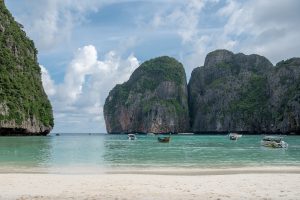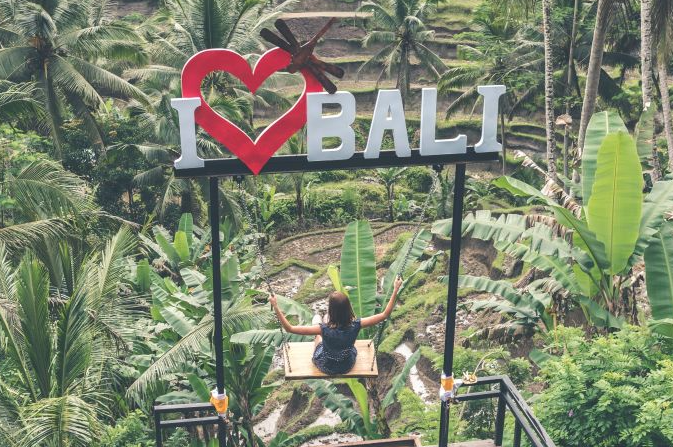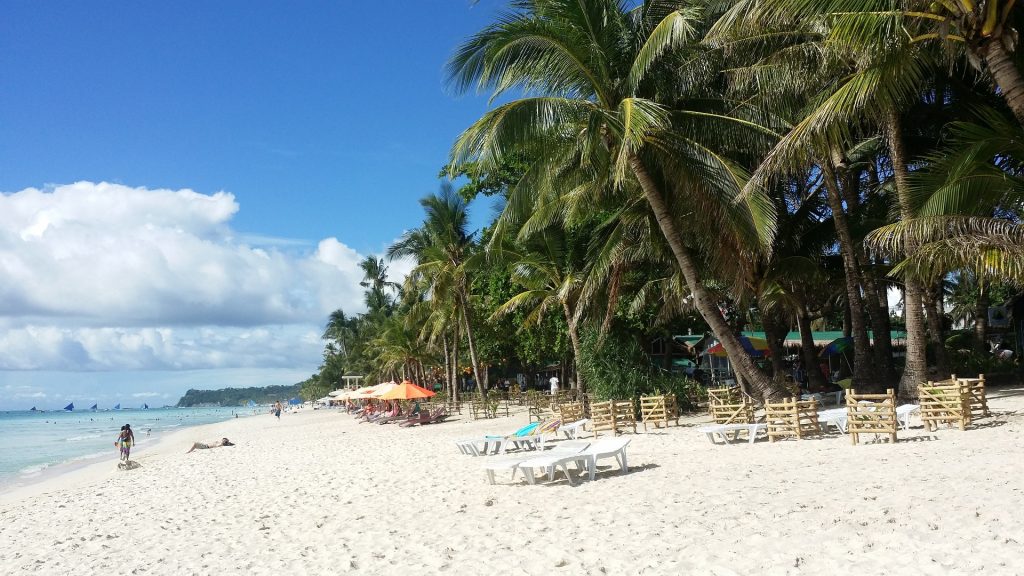 1. Introduction
1. Introduction
Maya Bay, located on the island of Koh Phi Phi Leh in Thailand, gained international fame after it was featured in the movie The Beach. Its crystal-clear turquoise waters, framed by towering limestone cliffs and powdery white sand, have made it one of Thailand’s most popular tourist destinations. However, the sudden surge in tourism has taken a serious toll on the area, leading to environmental degradation and frustration among local communities. In response, Thailand’s government has even closed Maya Bay several times to allow the ecosystem to recover. But why are locals increasingly pushing for stricter regulations on tourism?
2. A Brief Overview of Maya Bay
Maya Bay is a picturesque beach located in the Andaman Sea, part of the Hat Noppharat Thara–Mu Ko Phi Phi National Park. With its natural beauty and secluded location, it quickly became a magnet for tourists. Before the film was released, Maya Bay was relatively unknown and had a small number of visitors, but in recent years it has welcomed upwards of 5,000 tourists per day.
The area is renowned for its vibrant marine life, including coral reefs, fish, and a diverse ecosystem supported by the bay’s protected waters. The surge in visitors, however, has led to significant ecological damage, especially to the once-thriving coral reefs, which were left damaged and bleached due to overuse and pollution.
3. The Local Perspective
While tourism has brought economic opportunities to the region, many locals and environmental advocates are concerned about its negative impact on Maya Bay:
- Environmental Destruction: Maya Bay’s ecosystem is delicate and highly sensitive to changes. The constant arrival of speedboats and tourists has caused erosion and severe coral damage. Anchors dropped into the bay by hundreds of boats each day have destroyed large sections of the coral reef, while sunscreen, pollution, and physical trampling by tourists have led to coral bleaching. The biodiversity of the area, including rare fish species and marine life, has declined as their habitat continues to be damaged.
- Overcrowding and Strain on Resources: The sheer volume of tourists visiting Maya Bay has transformed it from a peaceful natural paradise into a crowded attraction. During peak times, the beach becomes so packed that it’s difficult to even find a place to sit. The crowds disrupt the natural habitat and create noise pollution, which impacts marine life that relies on the bay’s peaceful environment.
- Pressure on Local Communities: The influx of tourists has put pressure on local resources, including food, waste management, and infrastructure. Residents of nearby islands, including Phi Phi Don, face rising costs of living due to tourism-driven demand. Waste disposal has also become a challenge, with much of the trash generated by tourists ending up polluting the island and its surrounding waters. Many locals are frustrated with the impact of tourism on their quality of life and the changes it has brought to their traditional way of life.
4. The Impact of Overtourism
The consequences of overtourism on Maya Bay are severe, affecting both the environment and the local community:
- Ecosystem Collapse: The coral reefs of Maya Bay, which play a vital role in supporting marine life, have suffered extensively. Reefs are essential not only for maintaining biodiversity but also for protecting coastal areas from erosion. With much of the coral in Maya Bay dead or damaged, local marine life has diminished, affecting the area’s ecological balance. This degradation led Thai authorities to close the bay temporarily in 2018 to allow for coral restoration efforts.
- Loss of Cultural and Natural Value: Maya Bay’s transformation into a crowded tourist hub has led to the loss of its natural charm and significance. What was once a pristine natural paradise now risks becoming a commercialized destination, losing the qualities that made it special in the first place. For locals, the bay has lost part of its cultural and environmental value as it has been altered to cater to tourists.
- Economic Overdependence on Tourism: The reliance on tourism has created economic vulnerabilities for nearby communities. The COVID-19 pandemic showed the risks of depending solely on tourism, as travel restrictions left many locals without stable incomes. This reliance on tourism is prompting some community leaders to push for more sustainable alternatives that will reduce environmental impact and support local livelihoods year-round.
5. Respectful Travel Tips
For those who wish to experience Maya Bay responsibly, there are ways to minimize your impact on the environment and support the local community:
- Visit During Off-Peak Times: If you’re planning to visit Maya Bay, consider going during the off-peak season when the number of tourists is lower. This reduces the strain on the ecosystem and allows the area to recover more easily. Additionally, traveling during quieter times can offer a more peaceful experience.
- Choose Eco-Friendly Tours: Opt for tour operators who follow sustainable practices, including “no-anchor” policies to protect the coral reefs and bans on single-use plastics. Some eco-conscious operators also contribute to coral restoration efforts and help educate tourists on how to protect the marine ecosystem.
- Respect Marine Life: Avoid using sunscreen with harmful chemicals, as it can damage coral reefs. Many places in Thailand offer reef-safe sunscreens. Refrain from touching or standing on the coral, as even minor contact can harm the fragile ecosystem. It’s also important to keep a respectful distance from marine life while snorkeling or diving.
- Limit Your Stay: Consider spending less time on the beach itself and instead exploring other areas around Koh Phi Phi Leh. This reduces crowding and provides more space for those visiting, while also allowing you to experience the natural beauty of the surrounding area.
6. Ethical Considerations
Maya Bay is not just a tourist destination; it’s a delicate marine ecosystem that is struggling to survive. As travelers, we must consider whether our visit will contribute to further damage or if there are ways to experience the beauty of Thailand more responsibly. Supporting efforts that promote marine conservation and opting for sustainable tourism practices are essential steps in preserving places like Maya Bay for the future.
7. Alternatives to Maya Bay
For those interested in exploring Thailand’s natural beauty without contributing to overtourism, here are some alternatives:
- Railay Beach: Located near Krabi, Railay Beach offers stunning cliffs, clear waters, and fewer crowds. It’s accessible only by boat, which helps limit the number of visitors and maintains its serene atmosphere.
- Koh Lipe: Known for its coral reefs and clear waters, Koh Lipe offers a less-crowded experience with plenty of snorkeling and diving opportunities. It’s a good option for travelers looking to enjoy marine life without the throngs of tourists.
- Koh Tao: This small island is a diver’s paradise, with some of Thailand’s best coral reefs and diverse marine species. Koh Tao promotes eco-friendly tourism and offers numerous diving schools that practice sustainable practices.
8. Conclusion
The allure of Maya Bay’s beauty is undeniable, but the pressures of overtourism threaten to permanently damage this fragile ecosystem and impact local communities. While temporary closures and restoration efforts have helped, responsible travel and sustainable practices are crucial to ensuring the bay’s preservation. By visiting conscientiously—respecting marine life, choosing eco-friendly operators, and supporting local businesses—travelers can help protect this iconic destination for future generations.

